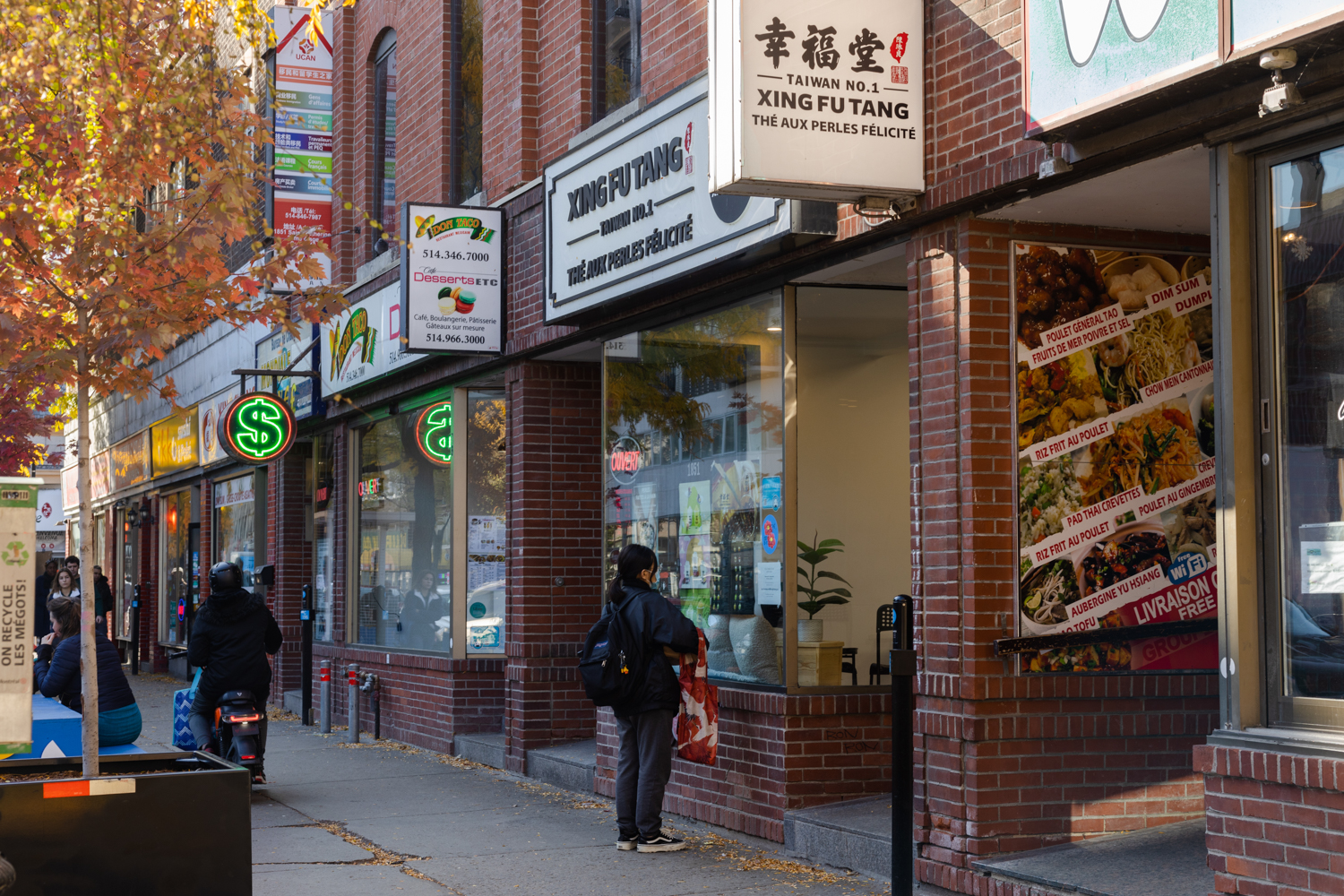A walk through Montreal in the search of bubble tea.
As a newcomer to Montreal, I am unfamiliar with the many bubble tea shops that surround the SGW Campus of Concordia University. So I was thrilled last Thursday afternoon when Sara, a Montreal local, took me and my German friend Emma under her wing.
After a long discussion about politics, we walked down St. Catherine. We walked past no less than four bubble tea shops before Sara guided us into the Taiwanese chain Xing Fu Tang.
There was a tragic tea spill on the floor when we walked into Xing Fu Tang, and the air smelled like fresh fruit and caramelized sugar. Black boba pearls bubbled in a golden pot next to the counter, and smooth K-pop tunes tumbled out of the speakers.
An array of tea choices faced the customer, with everything from refreshing green teas to the classic brown sugar and fresh milk.
Xing Fu Tang, which means “sugar with happiness,” started in Taiwan in 2018, and now has branches across the globe, including in Canada. They only opened a store in Montreal late last year, and it’s easy to see why it’s now become a local favourite.
Upon entering the shop, Sara proceeded to ask the waitress for “whatever it is that smells very good.” The waitress replied, “Do you mean that drink that’s spilled on the floor?,” and Sara said yes! I went with a classic brown sugar pearl milk tea, and Emma did too.
It’s the boba (tapioca pearls) that maketh the bubble tea. The first sip is a cautious one, with the drinker uncertain what to expect.
I started asking myself, “Will the pearls be cooked all the way through? Has the brown sugar soaked through the tapioca?”
Xing Fu Tang’s tapioca pearls are flawless — soft and chewy in the middle, and satisfyingly sweet. The brown sugar pearls offset the milk tea perfectly, and the tea isn’t sickly sweet.
We take our teas out into the sunshine, and find a bright blue picnic table to sit on. Sara has received a tall passion fruit pearl tea, and was happy with her surprise choice. Emma — who was new to the wonders of bubble tea — took a few tentative sips of her brown sugar milk tea, and announced that while she was a little unsure about the drink, she had fun eating the pearls. We reassured her that boba is somewhat of an acquired taste, and we’ll order her a fruit tea next time.
